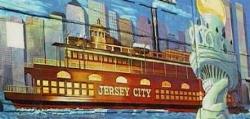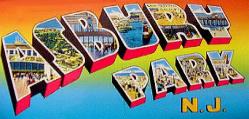 |  |  |
|
| ||
 |  |  |
 |  |  |
|
| ||
 |  |  |
|
|
By Harriet Phillips Eaton
Published 1899
This Web version, edited by GET NJ
COPYRIGHT 2002
Christ Hospital, an Episcopalian institution, was first started in the old Tonnele mansion on Magnolia avenue. After a few years Dr. Abercrombie rented the building, and largely through his efforts the hospital was made a success. In 1889 the new hospital was opened on Palisade avenue, and this year a large addition is being made to the building. In 1890 a training school for nurses was organized, which has graduated highly skilled and efficient nurses. There is an out-door department which gives medical aid to a large number. The maintenance of the hospital is managed by the council, assisted by the hospital guilds.
St. Francis Hospital was founded in 1864, by the "Sisters of the Poor of St. Francis," in a small way in a private dwelling on the northeast corner of old Fourth and Coles streets. Now they have the most complete hospital in the state, due, says the journal's History of Jersey City, wholly to the tireless work and activity of the noble order of sisterhood who have charge of it. It is not endowed, is distinctly a charitable institution, receiving neither state nor municipal aid. Its charities are free to all, irrespective of creed, color or nationality. Its a splendid evidence of the devotion to duty, indomitable courage, perseverance, energy and self-denial of the Sisters. The number of patients treated annually at St. Francis exceeds that of all other hospitals in Jersey City.
The Home of the Homeless, started by a few ladies is 1883, now situated at 266 Grove street, has accomplished a vast amount of good in sheltering hundreds of children and a few homeless women. The Children's Friend Society was incorporated in 1864. They established the first Children's Home on southeast corner of Erie street and Pavonia avenue, but in 1874 built the present home in Glenwood avenue, near West side avenue. Here destitute homeless children are cared for, clothed and educated, trained to become self-supporting men and women. One of the most worthy charities of the city. The Home for Aged Women grew out of the efforts of a few ladies who started a fund in January, 1866. In 1868 the Society was incorporated. For seventeen years the Home was at 131 Wayne street. In 1885 Mrs. Moore, a Scotch lady, gave the Society her property on the corner of Bergen and Fairview avenues, in consideration of a home in the institution for the remainder of her life. They have added to the building, and it is now a comfortable home for a large number of old ladies. The Catholic Societies support the St. Michael's, St. Joseph and St. Mary's Orphan Asylums, each with a school connected.
One of the most beneficient institutions of Jersey City is the Social Settlement, the Whittier House, founded by Miss Cornelia Bradford, in the old Clark house, 179 Grand street, in May, 1894. Miss Bradford is the head worker, and is assisted by five " resident workers" and fifty "out workers," who come in from neighboring towns and Jersey City, to take charge of certain departments. The members of the various clubs and classes pay small fees which are merely nominal. The work has been extended to such a degree that last year it became necessary to hire another building and still another will be required this year. The work includes a kindergarten, medical and dental dispensaries, a sewing school, classes in dancing, physical culture, in household service (the kitchen garden) and cooking; numerous clubs, among which are the " Mothers," the " Newsboys," "Working-Girls," the Civic League, etc.; a Penny Provident Fund, a station of the Public Library, and altogether too many branches of usefulness to be enumerated here. In another part of the city Mrs. Brice Collard has a flourishing sewing school of over six hundred members; also a Mother's Club, both of which do much good work.
|
|
|
|
 Your Ancestors' Story |
 Bruce Springsteen's Jersey Shore Rock Haven! |

|
UrbanTimes.com |